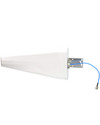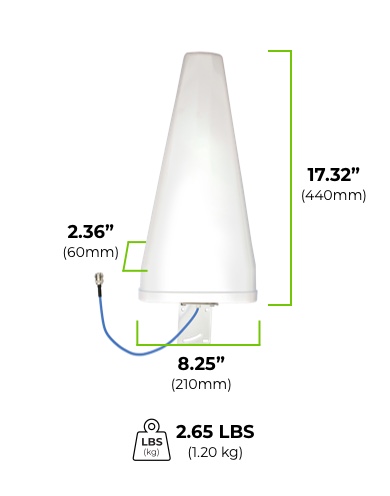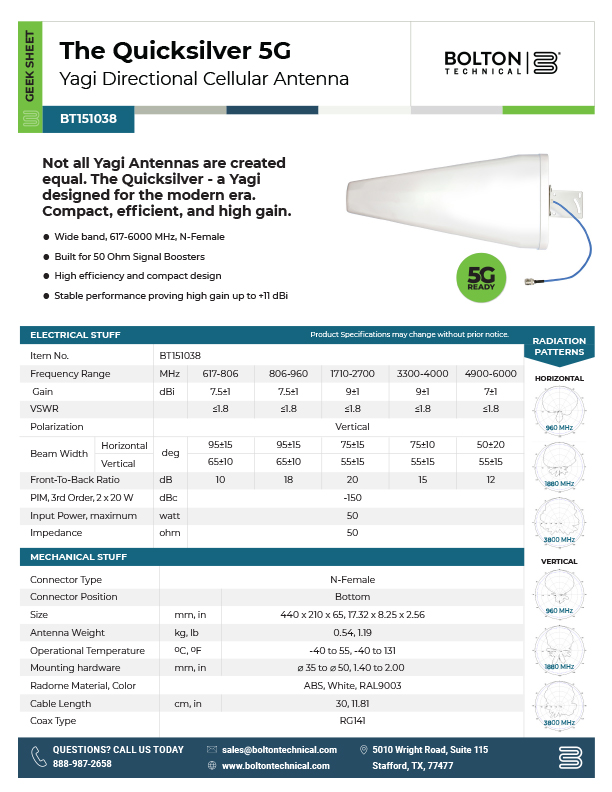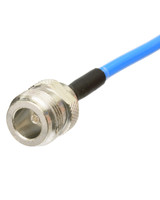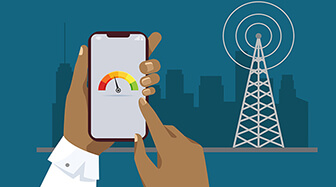You’ll not find a higher quality yagi than The Quicksilver 5G from Bolton. Compact, durable, and reliable, this thing’ll get your weak signal and deliver it far stronger wherever it needs to go.
The Quicksilver 5G got its name due to its proclivity for speeding up slow cellular data. We’ve tried this Yagi up against its other competitors, and it simply performs better. This is one of our most popular antennas for a reason. It designed as an accessory for or in addition to a 50-ohm cellular signal booster system or hotspot, and boosts gain at the point of capture by up to 11 dBi.
Quicksilver 5G Yagi donor antennas capture signal in a 45 degree “flashlight” radius, allowing for higher gain at a point of entry than their omni-cousin, The All-Rounder. This requires a little more work, but is frequently the best option for getting you improved cellular signal, as these can work far better than an omnidirectional antenna when installed properly.
The Quicksilver 5G is designed for fixed building installations outside a home, office, or commercial space. It will capture 5G signal.
The Bolton Technical Quicksilver 5G Yagi directional antenna works with all cell phone signal boosters (weBoost, WilsonPro), and cellular hotspots (TP Link, Huawei, Netgear, D-Link etc).
You have questions. We have answers.
The Quicksilver 5G offers far more gain than the omnidirectional All-Rounder, but less than the specialized Arrow and Long Ranger antennas. We generally recommend this with most home signal boosters or cellular hotspots, as it lies in a nice, sweet spot between power and range. It only falters in exceptionally weak signal areas or when a long distance from the nearest cell tower. It can also be used to capture 5G signal.
Bear in mind that The Quicksilver 5G is a 50 Ohm antenna with an N-Female termination, meaning it works with 50 Ohm cable with an N-Male termination.
The Quicksilver 5G captures any signal between the 617-6000 MHz bandwidths. That includes all 4G and LTE cellular signal, as well as 5G. The Quicksilver covers all African mobile networks including Ghana (MTN, Vodafone, Airtel, Tigo and Busay), Botswana (Bemobile, Mascom, Orange), Namibia (MTC, tn Mobile), Zambia (MTN, Airtel, Zamtel) and far more.
dB refers to the power gain of the antenna, and the higher the number, the more powerful the antenna. As dB is measured on a logarithmic scale, every +3 dB represents a doubling of the power gain.
The Quicksilver will work on any African or US network, as well as most cellular networks worldwide. If you are not sure your country’s carrier will work with The Quicksilver 5G, verify whether your service falls within the 617-6000 MHz bandwidth, and if so, it will work.
It will. However, it’s best pointed at a specific tower. If the carrier you want captured is not represented on that tower, you’ll need another Quicksilver 5G or other donor antenna to capture it.







